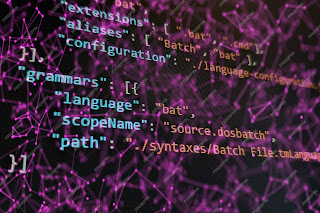Information technology (IT) encompasses studying and applying computers and telecommunications systems to store, retrieve, transmit, and manipulate data or information. Programming language is a vital component of IT, as it serves as the medium through which humans can communicate with computers and instruct them to perform specific tasks. This response will delve into the multifaceted relationship between programming language and the fundamentals of IT, exploring how they are inextricably intertwined and mutually reinforcing.
The history of computers is closely intertwined with the development of programming languages. Early computers were limited in functionality and required highly specialized knowledge to operate. Programming languages date back to the 1940s, with the development of early languages like FORTRAN and COBOL, which laid the foundation for more advanced languages to emerge (Stair & Reynolds, 2018). The advent of these high-level programming languages made it possible for a broader range of individuals to program computers, leading to a proliferation of applications and advancements in various fields. Modern computers operate based on the stored-program concept, which involves storing instructions in memory and executing them sequentially. Programming languages provide a means of expressing these instructions in a structured and human-readable format, allowing programmers to control the behavior of computers and perform complex operations.
Programming language relies heavily on the major hardware components of a modern computer system. These components include a central processing unit (CPU), memory, and input/output devices. The CPU interprets and executes program instructions, performing calculations and logical operations. Memory stores program instructions and data, providing the CPU with the necessary information to perform its tasks. Input devices like keyboards and mice allow users to interact with the computer and provide input. Output devices, such as monitors and printers, display or print the results of program execution. Programming languages must be designed to utilize these hardware resources and optimize performance efficiently.
Programming languages provide a structured approach to writing instructions for computers. They define syntax and semantics that enable programmers to express computational processes precisely and unambiguously. Different programming languages have different strengths and weaknesses, catering to specific application domains or programming paradigms. Program execution involves translating the high-level programming language code into machine code, which the CPU can directly execute. This translation is performed by a compiler or interpreter, which converts the program into a series of instructions that the computer can understand.
Application software, such as word processors, spreadsheets, and databases, is built using programming languages. Application software provides end-users with a user-friendly interface and pre-defined functionality for specific tasks. Programming language enables developers to create custom applications that meet the unique needs of individuals or organizations. Application software development has been a major driving force behind the adoption of programming languages and has facilitated the widespread use of IT in various industries and aspects of everyday life.
Databases are essential for storing and managing large amounts of structured data. Programming languages provide the means to interact with databases, perform queries, and manipulate data. Database management systems (DBMS) provide an interface between programming languages and databases, allowing developers to access and manage data efficiently. Understanding the basic concepts of database and database management is crucial for programmers with data-intensive applications. Programming languages provide a powerful toolset for accessing, manipulating, and analyzing database data.
Network architecture, management, and security are fundamental IT aspects closely related to programming language. Networking protocols and communication standards, such as TCP/IP and HTTP, are often implemented using programming languages, ensuring the seamless exchange of data across various devices and platforms (Rouse, 2023). Programming languages are used to develop network protocols, manage network resources, and implement security measures. Programmers must understand the underlying principles of network architecture to design and implement network applications effectively. They must also know network management techniques to ensure network services' availability, reliability, and performance. Additionally, programming languages provide tools and libraries for implementing encryption algorithms and security protocols, protecting data and systems from unauthorized access.
Programming language is a foundational element of information technology, bridging human intention and computer execution. It connects the fundamentals of IT, including the history of computers, computer operation, hardware components, software development, database management, and network architecture, into a cohesive and powerful tool for solving complex problems and creating innovative solutions. By mastering programming language, individuals can better understand IT concepts, unlock their creative potential, and contribute to advancing technology and innovation.
References
Rouse, M. (2023). What is a programming language?
TechTarget.
https://www.techtarget.com/searchapparchitecture/definition/programming-language
Stair, R. M., & Reynolds, G. W. (2018). Fundamentals of
information systems (8th ed.). Cengage Learning.
